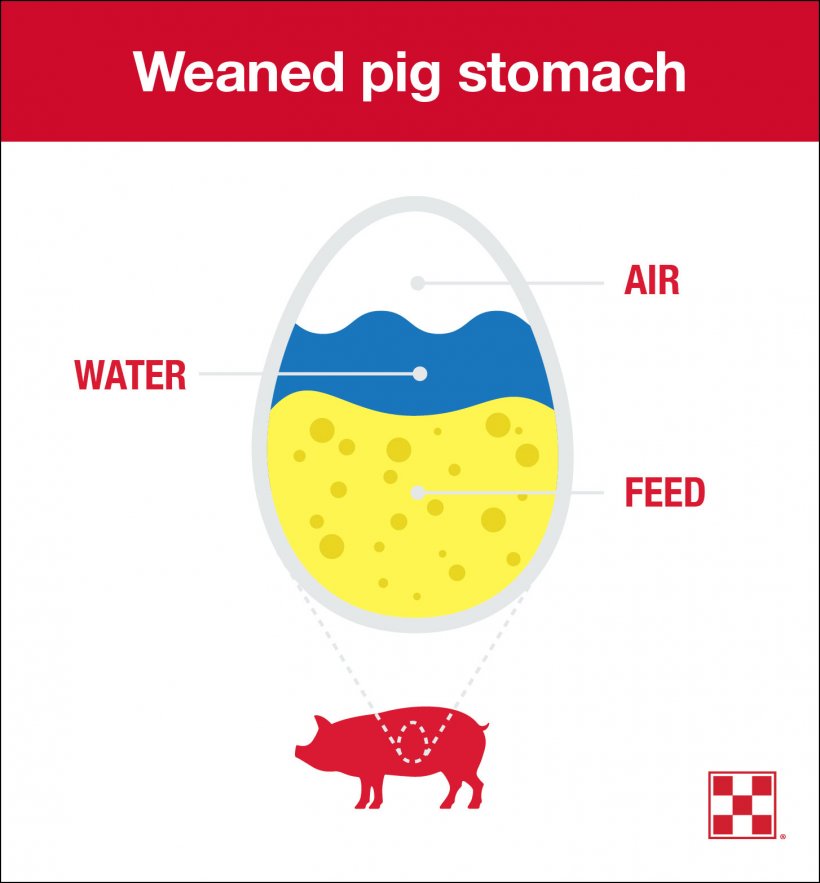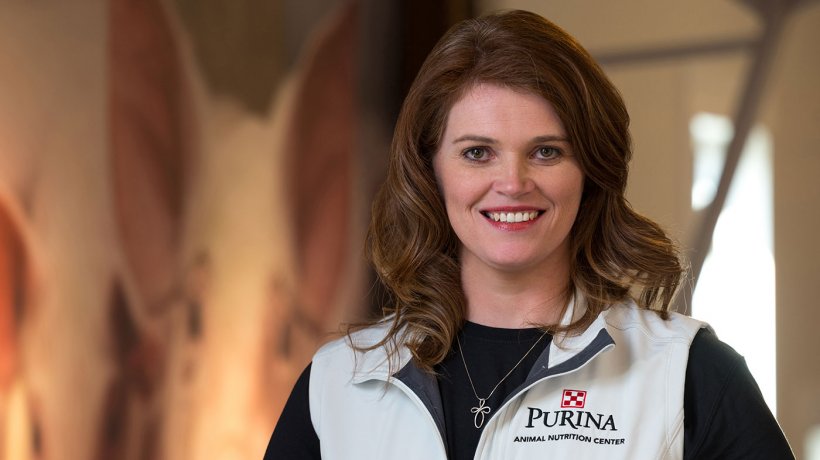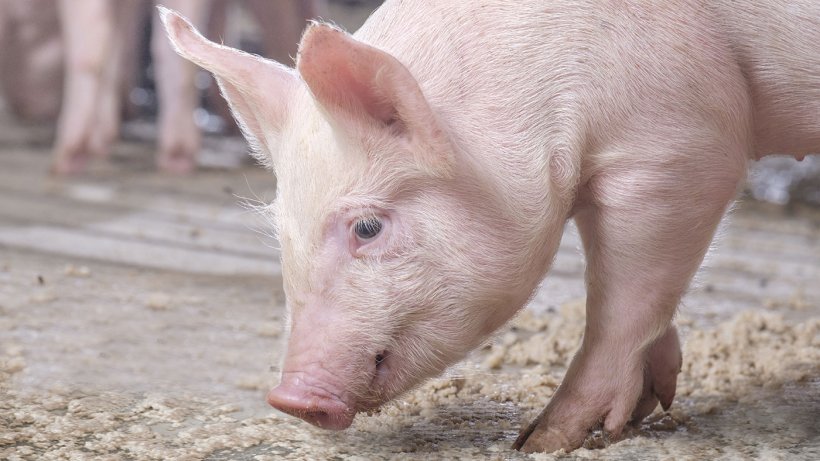 Getting newly-weaned pigs to eat several times per day is a first step toward profitable finishing. Crack an egg, and you’ll understand why.
Getting newly-weaned pigs to eat several times per day is a first step toward profitable finishing. Crack an egg, and you’ll understand why.
A 21-day-old pig’s stomach is approximately 2 ounces, or about the size of a large chicken egg. But, only about half (1 ounce) is available for feed intake at any given time. The remaining ounce is reserved for water intake and air.


“Stomach size is the first limiting factor in weaned pig feed intake,” says Stacie Crowder, lead swine nutritionist at Purina Animal Nutrition. “In one trip to the feeder, early nursery pigs can eat only as much as would fit in half an eggshell. They need to eat their fill multiple times per day to consume enough nutrients for optimal growth.”
To make the most of every feeding, provide feed with high-quality ingredients and implement management practices that encourage repeat trips to the feeder.

Implement these strategies to get the most out of your feed investment, 1 ounce at a time:
1. Hydration is key
Feed intake is highly correlated to water intake. It can take as long as 36 hours for 85 percent of newly-weaned pigs to find water.
Gel hydration and electrolyte products can help keep pigs hydrated and performing well in the first week post-weaning and times of stress. Gel and electrolytes provide sodium, chloride, magnesium, vitamins and pH acidifiers. These nutrients help balance the gut and keep pigs drinking and eating.
2. Mat train to create more consistent eaters.
Mat training is ideal for nursery pigs because they naturally eat in groups. Placing feed on mats initiates pen activity, which can lead to increased feed intake.
“Pigs have the same response as most people do when they get up from their armchair during a commercial break,” Crowder says. “We get up, use the restroom and go to the kitchen for a snack. Then we return to our comfort zone and repeat the cycle. Mat training encourages the same behavior in pigs.”
Mat training also allows you to identify poor eaters early so you can respond and prevent potential challenges as the pigs grow and develop
Mat feed pigs 4-6 times per day during the first 3-7 days post-weaning for best results. Provide 0.4 square feet of mat per pig, and sprinkle 1 pound of feed or feed supplement per 40 pigs at each feeding.
3. Choose smart feed-intake technology.
Before weaning, the smell of the sow drove the young pig to seek food, and compounds in sow’s milk triggered the urge to continue eating. This internal drive, triggered by the senses, is called imprinting, and you can use it to encourage repeat feeding in the nursery. The right ingredients combined with intake-enhancing technology can drive feeding behavior in newly-weaned pigs, even though they are unfamiliar with the feed.
“How often have you thought, ‘I’m only going to have one or two bites of chocolate cake,’ only to find you have eaten a whole piece?” Crowder says. “That first bite made you feel so good you kept eating without thinking about it. A few hours later, you might have gone back to eat another piece. That’s the response you need from your nursery diets to drive repeat feeding behavior.”
On average, pig feed intake 3-4 days after weaning is too low to meet the pig’s needs.[1] Intestinal development can suffer as a result, leaving pigs vulnerable to health challenges and opening the door for poor feed efficiency. Additional stressors during this crucial time can increase the energy needs of the piglets and further compound the issue from reduced feed intake.
“Set your pigs up for strong performance by encouraging repeat feeding in the early nursery phase,” says Crowder. “Newly weaned pigs are limited to an eggshell-sized scoop of feed at a time. The more often you get them to go to the feeder, the better chance you give them to thrive through the finishing phase.”

Visit progresstoprofit.com for more tips on maximizing your profit potential with great pig nutrition and management.
Oct. 17, 2018 - Purina Animal Nutrition LLC




